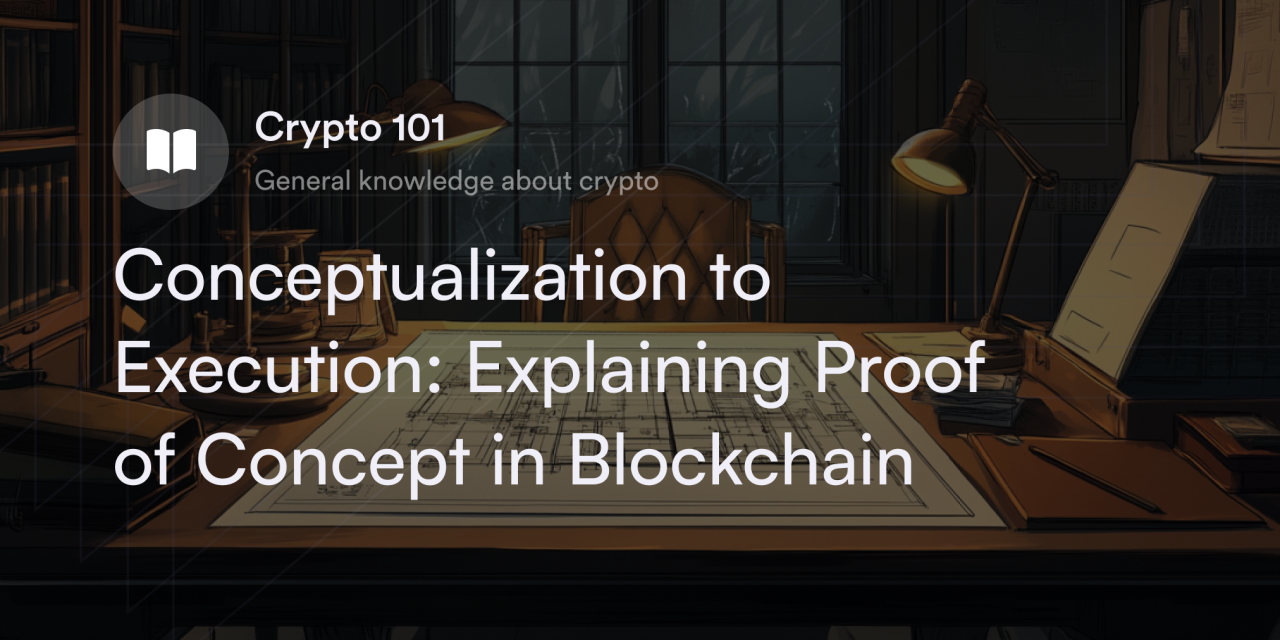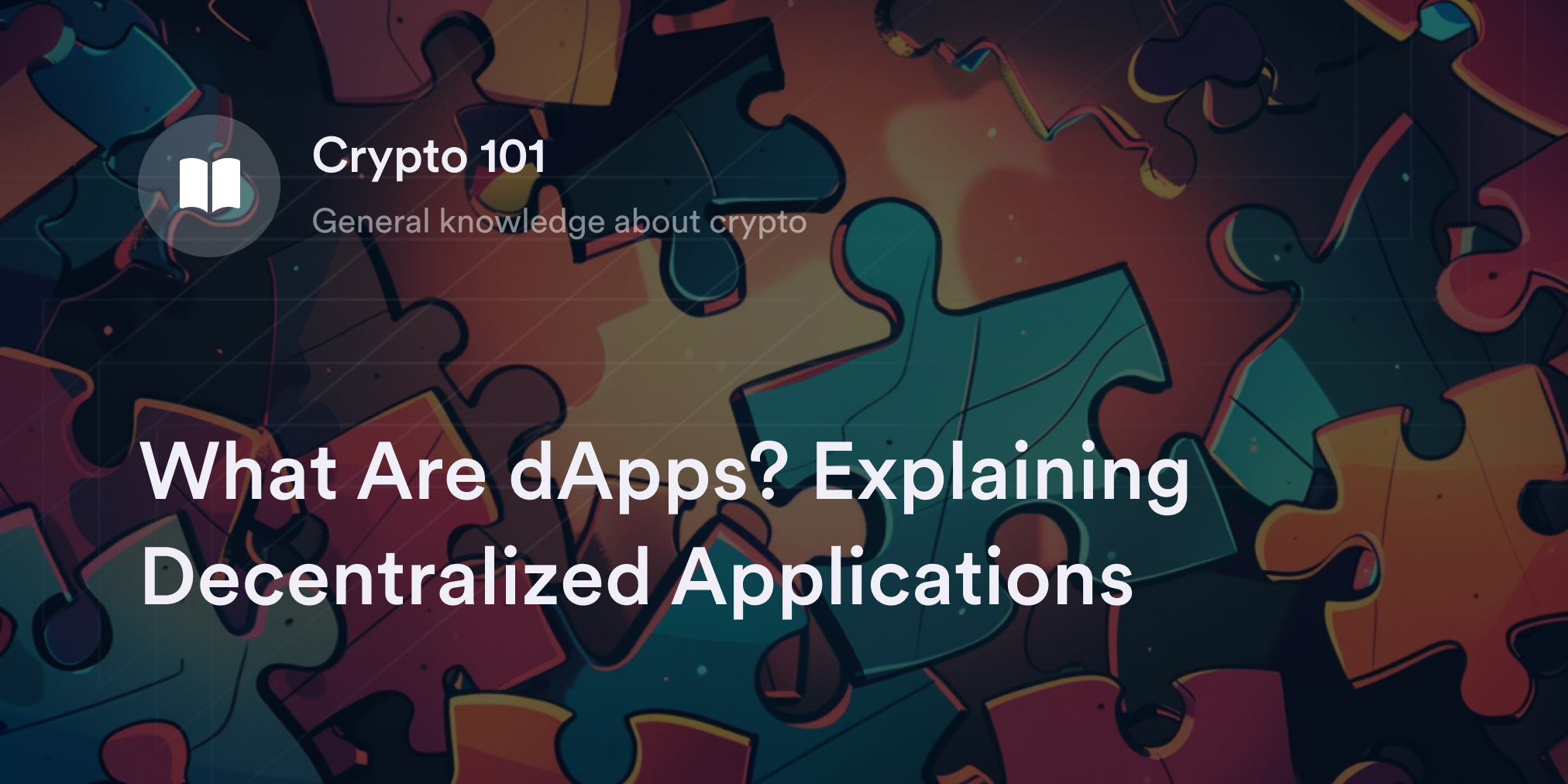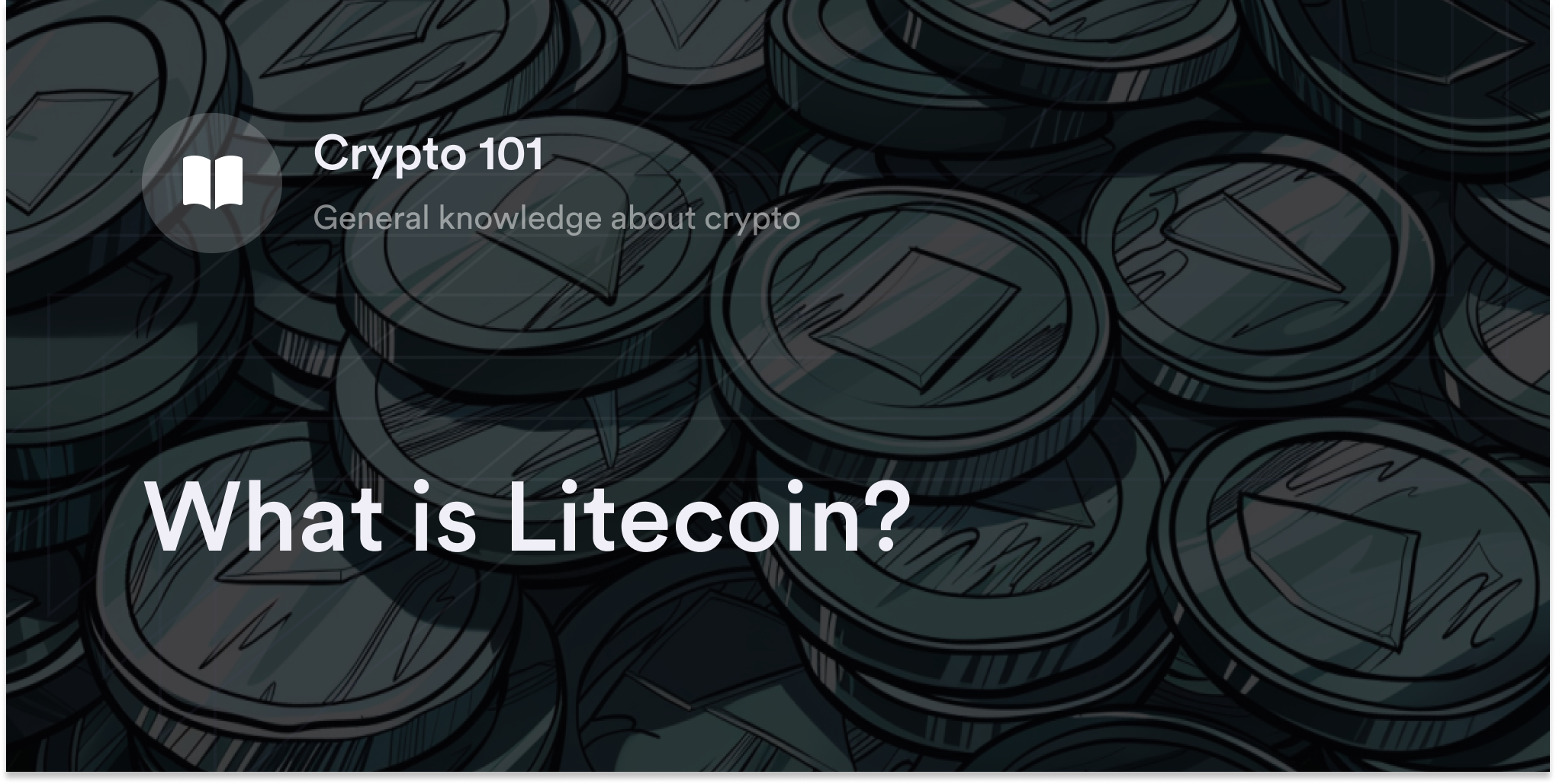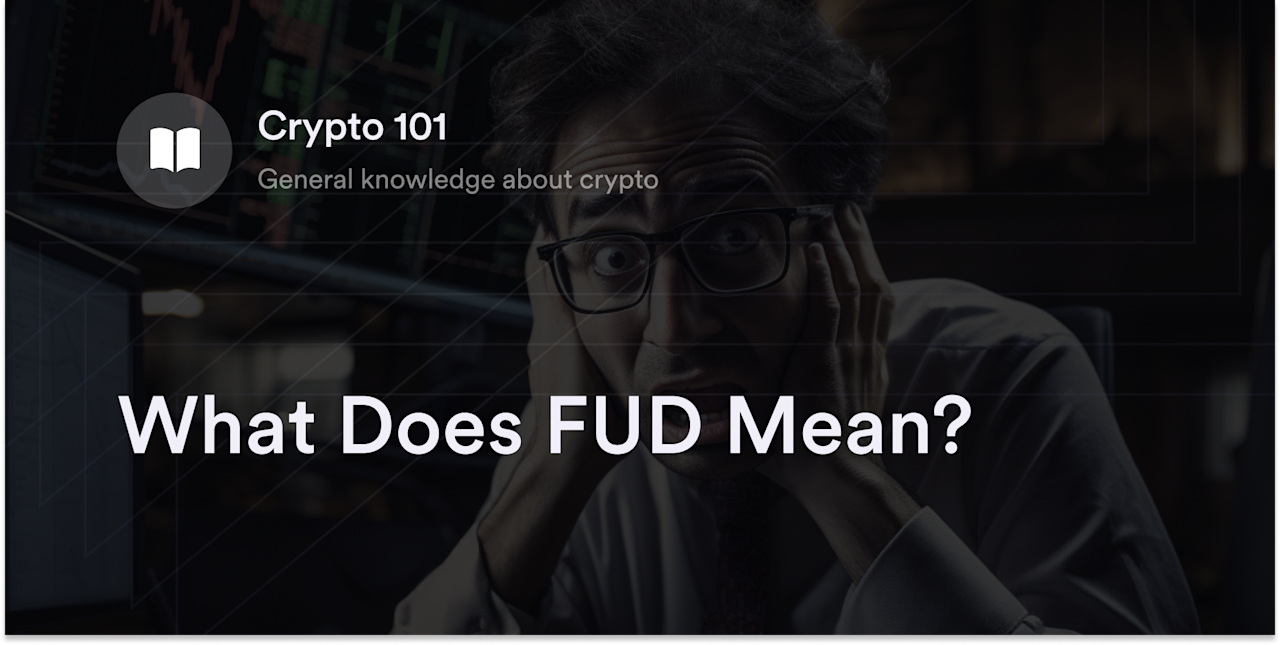


Despite the many proposed benefits of blockchain technology, implementing this software framework into established industries isn't a quick and simple decision. Before making any big moves into the blockchain space, corporations need concrete evidence that distributed ledgers are the right fit for their digital data flows.
One of the most common ways businesses evaluate the feasibility of blockchain applications without excessive risk is through a process called proof of concept (PoC). In many cases, a thorough PoC report represents the first tentative steps into the wide world of Web3, making it a crucial stepping stone in expanding decentralized tech outside of digital finance.
In this guide, we’ll review what PoC is, why it’s becoming increasingly common in various industries, and why it’s the preferred template for experimenting with blockchain. We’ll also discuss how PoC promises to make decentralization mainstream.
What is proof of concept in crypto?
By definition, a proof of concept is a demonstration that showcases the feasibility and potential effectiveness of a new blockchain or crypto-related idea, technology, or application.
Think of it as similar to a blueprint that outlines the plan, viability, and requirements for building a blockchain infrastructure. These initial outlines test the feasibility of a particular blockchain solution and address whether the proposed benefits of this technology outweigh the expected costs. Relevant stakeholders meet to align values, define their budget constraints, and set measurable success metrics for their PoC before committing significant resources to building a full-scale blockchain.
In this way, a PoC helps leaders address their concerns, weigh pros and cons, and develop a strategy for successful blockchain implementation in a low-stress, low-stakes environment.
Proof of concept versus prototype
A prototype is a rudimentary representation of a proposed blockchain solution, which gives stakeholders their first glimpse into "how" this technology looks. Although building a prototype is often a part of the PoC process, these two phrases aren't interchangeable.
A PoC typically involves a blockchain project’s technical viability rather than demonstrating how it looks or functions in the real world. Teams only move on to the prototyping phase if the PoC shows it's worth investing more time and resources into researching a blockchain system.
Proof of concept versus minimum viable product (MVP)
The MVP takes prototyping to the next level. Although MVPs still aren't ready for prime time, they have all the essential features and functionality stakeholders expect to see in their final protocol. Rather than giving a visual representation of a proposed blockchain infrastructure, MVPs let users directly interact with the software application in simulated scenarios.
Like the difference between prototypes and PoCs, MVPs are concerned with the "how" of incorporating a blockchain infrastructure into workflows, while the essential meaning of PoC is whether a decentralized system is realistic. MVPs are sometimes used in the last stage of a PoC evaluation, but they aren't necessary when building an initial blockchain concept.
What are the benefits of a blockchain proof of concept?
PoCs help leaders interested in the potential of blockchain explore this technology's possibilities without putting significant capital on the line. The information from a PoC is the best way to figure out whether to put blockchain plans on the back burner or move further into Web3.
Here are a few advantages of PoC:
Validates a product idea’s feasibility
PoCs help businesses establish whether a blockchain solution is technically feasible, given their current resource constraints. With this initial information, companies are better positioned to decide whether adding blockchain is possible and whether it's the wisest move for their situation.
Reduces risks and resources
Investing in a PoC isn't as expensive as building a full-fledged product, and it doesn't come with a costly risk of failure. Companies don't have to allocate much time, energy, and capital to explore blockchain technology's applications in a PoC.
Identifies pain points and generates feedback
Besides costing less to build, a PoC helps prevent future costs by spotting potential errors and bottlenecks in a blockchain's programming. Once companies build prototypes and MVPs, they gather valuable feedback from stakeholders and early users, which helps further refine the blockchain product before developing real-world applications.
Improves stakeholder alignment
A successful PoC brings stakeholders together to draw out a comprehensive plan, establish a project's viability, and create transparent and tangible goals for a product. This enhanced collaboration ensures everyone in an enterprise has the same expectations, project scope, and objectives if they decide to move forward with development.
Provides market insights
A PoC can provide insights into market response and user adoption, offering valuable data for refining the blockchain solution to better meet market and user needs.
How to plan and execute a proof of concept
There's no one-size-fits-all template for writing proof of concept examples, but many of these plans start with broad categorizations and gradually focus on the specific features of a blockchain offering. Taking a slow, step-by-step approach to a PoC gives teams the time they need to carefully assess the viability and desirability of using distributed ledgers.
Here are five steps to follow:
1. Define goals, key performance indicators (KPIs), and target market
The first step to creating an actionable PoC is to develop a clear set of definitions, expectations, and measurable success metrics to determine the "why" behind a blockchain solution. Meet with stakeholders to discuss the key criteria for using web3 tech and review customer profiles to establish the value propositions blockchain brings to the table.
It's also helpful to write a list of KPIs with tangible results to set actionable goals and determine how to evaluate the success of a future blockchain prototype.
2. Assess the technical viability of the software development process
After establishing the main reasons and benchmarks for a blockchain project, it's time to determine how realistic these ideas are. In this stage, companies run multiple analytics tests to gauge whether they have the technical capacity, expertise, and training resources to pull off a transition to blockchain tech.
This phase also includes a detailed cost analysis with estimates of the time, personnel, and finances required to build and integrate a blockchain application. If these tests reveal the cost to build with blockchain is too high—or it doesn't offer attractive benefits for the price—teams stop in their tracks. Conversely, when these tests show compelling value propositions for blockchain, companies turn their attention to more specific software development options.
3. Choose a blockchain technology stack for product development
Once team members establish the value and viability of integrating with blockchain software, they have to choose which tech stack most aligns with their goals and target audience.
For example, companies often compare competing blockchains like Ethereum (ETH), Cosmos (ATOM), and Solana (SOL) for different features like scalability, speed, and security until they find the one that fits their expectations.
During this research phase, teams also consider the privacy implications of using permissioned blockchains—which only let prescreened members participate in transfers and transaction validation—rather than open-source, public blockchains.
4. Develop a pilot project in prototype form
When stakeholders agree on their overarching vision and tech stack, it's time to create a user-centric prototype to see the first tangible evidence of the user interface/user experience (UI/UX) for a proposed business idea.
While prototypes only represent the final product, they help elicit valuable feedback from stakeholders to help developers through testing and iterative processes. Sending the prototype to select users in the target audience also provides teams with concrete information on ways to improve their projects.
5. Consider moving to an MVP
After reading through feedback and running multiple rounds of prototyping, teams often reevaluate their goals, budget constraints, and KPIs in light of the most recent findings. If these initial metrics are positive, they usually consider whether investing time and resources into an MVP makes sense.
Since MVPs are more involved than prototypes—and often lead to a full-fledged market release—companies don't move to this late stage if they aren't 100% comfortable with their prototype's performance in the product development process. Once the MVP is complete, consider shipping it to relevant stakeholders and target users in a soft release to gather more feedback before a market-wide release.
Turn trading theories into practice with dYdX perps
There's nothing "conceptual" about dYdX's decentralized crypto perpetuals exchange. Since our launch in 2017, dYdX has offered eligible traders a safe, low-fee, and deep liquidity platform to swap their favorite crypto perpetual contracts. To learn more about how dYdX works and our latest offerings, check out our official blog. Also, visit dYdX Academy, our in-house resource library, for more easy-to-understand guides on crypto concepts, blockchain tech, and trading tips.
Start trading on dYdX today.
Disclosures
The content of this article (the “Article”) is provided for general informational purposes only. Reference to any specific strategy, technique, product, service, or entity does not constitute an endorsement or recommendation by dYdX Trading Inc., or any affiliate, agent, or representative thereof (“dYdX”). Use of strategies, techniques, products or services referenced in this Article may involve material risks, including the risk of financial losses arising from the volatility, operational loss, or nonconsensual liquidation of digital assets. The content of this Article does not constitute, and should not be considered, construed, or relied upon as, financial advice, legal advice, tax advice, investment advice, or advice of any other nature; and the content of this Article is not an offer, solicitation or call to action to make any investment, or purchase any crypto asset, of any kind. dYdX makes no representation, assurance or guarantee as to the accuracy, completeness, timeliness, suitability, or validity of any information in this Article or any third-party website that may be linked to it. You are solely responsible for conducting independent research, performing due diligence, and/or seeking advice from a professional advisor prior to taking any financial, tax, legal, or investment action.
You may only use the dYdX Services in compliance with the dYdX Terms of Use available here, including the geographic restrictions therein.
Any applicable sponsorship in connection with this Article will be disclosed, and any reference to a sponsor in this Article is for disclosure purposes, or informational in nature, and in any event is not a call to action to make an investment, acquire a service or product, or purchase crypto assets. This Article does not offer the purchase or sale of any financial instruments or related services.
By accessing this Article and taking any action in connection with the information contained in this Article, you agree that dYdX is not responsible, directly or indirectly, for any errors, omissions, or delays related to this Article, or any damage, injury, or loss incurred in connection with use of or reliance on the content of this Article, including any specific strategy, technique, product, service, or entity that may be referenced in the Article.







